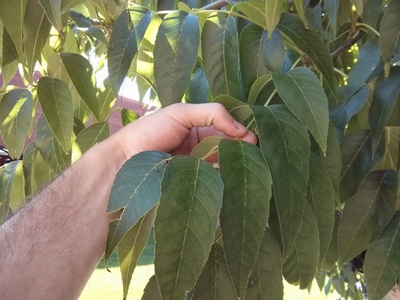Common Name: blue ash
Scientific Name:
Family: Oleaceae
Genus: Fraxinus
Species: F. quadrangulata
Hardiness Zone: 4 to 7
Height: 50 to 75 ft
Width: 35 to 60 ft
Common Characteristics:
Of the ash in Minnesota, the blue ash is the easiest to identify due to the square edges of the branches, revealing a square cross-section. The leaves are opposite, pinnately compound, and have 7 to11 leaflets. They are lance- to ovate-shaped and are long pointed with finely serrate margins. The leaflets turn from dark green to a pale yellow in the fall. The bark is gray and furrowed into scaly and shaggy plates. The 4-angled stout twigs are gray-brown and hairless. Clusters of apetalous bisexual purplish flowers appear in April-May with the foliage. The fruit of blue ash is a key with broad oblong winged samaras and hang in clusters that mature in the spring. Due to the emerald ash borer's spread across Minnesota, it is not advised to plant this species of ash.
Where it Grows:
Blue ash can be found growing on dry, rocky limestone slopes and moist soils of valleys. It can also be found growing in mixed hardwood forests. It prefers full sun and does not do well in part or full shade.
How it's Used:
Blue ash was once a good recommendation as a shade tree for residential areas and parks. The wood can be used for furniture and tool handles. Early colonialists used the inner bark of the tree and the sap for a blue dye, giving it its name. When the sap is exposed to air, it turns a blue color.
Ecosystem Services:
It provides food and shelter to migrant birds and insect pollinators.
Where it is Native To:
Blue ash's native range is small, covering portions of Indiana, Illinois, Ohio, Kentucky, Tennesse, Missouri, Arkansas.
Problems:
Blue ash is highly susceptible to Emerald Ash Borer, so this tree is not recommended for planting. Brittle branches are susceptible to damage from high winds and snow/ice.
References:
Little, E. L. (n.d.). National Audubon Society Field Guide to North American Trees; Eastern Edition. (Original work published 1980)
